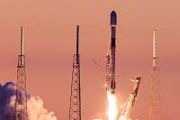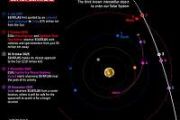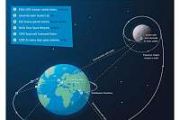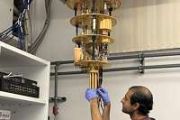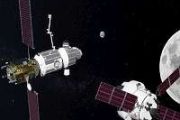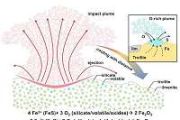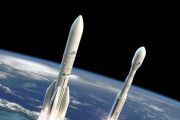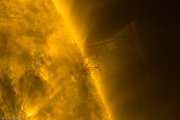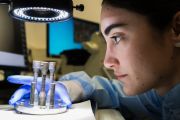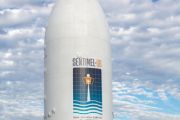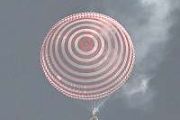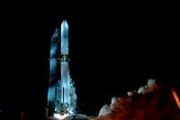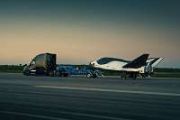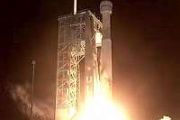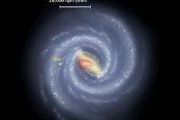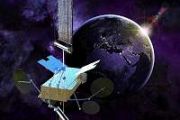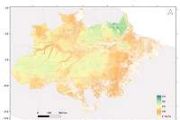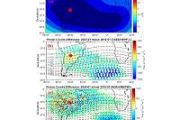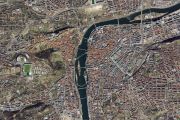
Copernical Team
BIT advances microbiological research on Chinese Space Station
 The Beijing Institute of Technology (BIT) reports its latest research project in now onboard the Chinese space station in the Mengtian experimental module. Launched aboard the Tianzhou-7 cargo spacecraft from the Wenchang Space Launch Center in Hainan province on January 17, this project represents a collaboration between BIT and Jiangsu Normal University.
This space microbiology project
The Beijing Institute of Technology (BIT) reports its latest research project in now onboard the Chinese space station in the Mengtian experimental module. Launched aboard the Tianzhou-7 cargo spacecraft from the Wenchang Space Launch Center in Hainan province on January 17, this project represents a collaboration between BIT and Jiangsu Normal University.
This space microbiology project Salsa's last dance targets reentry over South Pacific
 Launched in 2000, Cluster is a unique constellation of four identical spacecraft investigating the interaction between the Sun and Earth's magnetosphere - our shield against the charged gas, energetic particles and magnetic field coming from our star.
Despite a planned lifetime of two years, the Cluster mission has now spent almost 24 years in orbit.
Over the past two and a half deca
Launched in 2000, Cluster is a unique constellation of four identical spacecraft investigating the interaction between the Sun and Earth's magnetosphere - our shield against the charged gas, energetic particles and magnetic field coming from our star.
Despite a planned lifetime of two years, the Cluster mission has now spent almost 24 years in orbit.
Over the past two and a half deca Study: Stars travel more slowly at Milky Way's edge
 By clocking the speed of stars throughout the Milky Way galaxy, MIT physicists have found that stars further out in the galactic disk are traveling more slowly than expected compared to stars that are closer to the galaxy's center. The findings raise a surprising possibility: The Milky Way's gravitational core may be lighter in mass, and contain less dark matter, than previously thought.
T
By clocking the speed of stars throughout the Milky Way galaxy, MIT physicists have found that stars further out in the galactic disk are traveling more slowly than expected compared to stars that are closer to the galaxy's center. The findings raise a surprising possibility: The Milky Way's gravitational core may be lighter in mass, and contain less dark matter, than previously thought.
T Using Ancient Ultraviolet Light to Probe Theories of Cosmology
 By studying the formation and evolution of galaxies in the early universe, researchers seek to test the predictions of our leading theory of cosmology. New research suggests that the ultraviolet luminosity of low-mass galaxies just a few hundred million years after the Big Bang may provide a way to differentiate between cosmological models.
The leading theory of cosmology, called CDM, desc
By studying the formation and evolution of galaxies in the early universe, researchers seek to test the predictions of our leading theory of cosmology. New research suggests that the ultraviolet luminosity of low-mass galaxies just a few hundred million years after the Big Bang may provide a way to differentiate between cosmological models.
The leading theory of cosmology, called CDM, desc UC Irvine-led team unravels mysteries of planet formation and evolution in distant solar system
 A recently discovered solar system with six confirmed exoplanets and a possible seventh is boosting astronomers' knowledge of planet formation and evolution. Relying on a globe-spanning arsenal of observatories and instruments, a team led by researchers at the University of California, Irvine has compiled the most precise measurements yet of the exoplanets' masses, orbital properties and atmosph
A recently discovered solar system with six confirmed exoplanets and a possible seventh is boosting astronomers' knowledge of planet formation and evolution. Relying on a globe-spanning arsenal of observatories and instruments, a team led by researchers at the University of California, Irvine has compiled the most precise measurements yet of the exoplanets' masses, orbital properties and atmosph After Three Years on Mars, NASA's Ingenuity Helicopter Mission Ends
 NASA's history-making Ingenuity Mars Helicopter has ended its mission at the Red Planet after surpassing expectations and making dozens more flights than planned. While the helicopter remains upright and in communication with ground controllers, imagery of its Jan. 18 flight sent to Earth this week indicates one or more of its rotor blades sustained damage during landing and it is no longer capa
NASA's history-making Ingenuity Mars Helicopter has ended its mission at the Red Planet after surpassing expectations and making dozens more flights than planned. While the helicopter remains upright and in communication with ground controllers, imagery of its Jan. 18 flight sent to Earth this week indicates one or more of its rotor blades sustained damage during landing and it is no longer capa MITRE and MDC team up to advance at Midland Spaceport
 The Midland Development Corporation (MDC) and MITRE have recently inked an agreement aiming to synergize their efforts towards enhancing commercial space and high-speed flight operations at the Midland International Air and Space Port. This collaboration marks a significant step in advancing the United States' capabilities in both aviation and space travel sectors.
MDC, a key economic deve
The Midland Development Corporation (MDC) and MITRE have recently inked an agreement aiming to synergize their efforts towards enhancing commercial space and high-speed flight operations at the Midland International Air and Space Port. This collaboration marks a significant step in advancing the United States' capabilities in both aviation and space travel sectors.
MDC, a key economic deve Virgin Galactic Marks 11th Spaceflight with Full Passenger Manifest
 Virgin Galactic Holdings, Inc. (NYSE: SPCE), a pioneer in the field of commercial space travel, has completed its first spaceflight of 2024, marking its 11th mission overall. The 'Galactic 06' flight is notable for being the first to carry a full complement of private astronauts on board the VSS Unity.
Michael Colglazier, the CEO of Virgin Galactic, expressed his pride and confidence in th
Virgin Galactic Holdings, Inc. (NYSE: SPCE), a pioneer in the field of commercial space travel, has completed its first spaceflight of 2024, marking its 11th mission overall. The 'Galactic 06' flight is notable for being the first to carry a full complement of private astronauts on board the VSS Unity.
Michael Colglazier, the CEO of Virgin Galactic, expressed his pride and confidence in th NorthStar's situational awareness satellite constellation set for first launch
 Spire Global, Inc. (NYSE: SPIR), a renowned global provider of space-based data, analytics, and space services, has recently announced an exciting new mission. The company is set to launch four satellites dedicated to Space Situational Awareness (SSA) for NorthStar Earth and Space, a significant step in commercial space surveillance. This mission, named 'Four of a Kind,' is scheduled to lift off
Spire Global, Inc. (NYSE: SPIR), a renowned global provider of space-based data, analytics, and space services, has recently announced an exciting new mission. The company is set to launch four satellites dedicated to Space Situational Awareness (SSA) for NorthStar Earth and Space, a significant step in commercial space surveillance. This mission, named 'Four of a Kind,' is scheduled to lift off Confirmation of ancient lake on Mars builds excitement for Perseverance rover's samples
 If life ever existed on Mars, the Perseverance rover's verification of lake sediments at the base of the Jezero crater reinforces the hope that traces might be found in the crater.
In new research published in the journal Science Advances, a team led by UCLA and The University of Oslo shows that at some point, the crater filled with water, depositing layers of sediments on the crater floor
If life ever existed on Mars, the Perseverance rover's verification of lake sediments at the base of the Jezero crater reinforces the hope that traces might be found in the crater.
In new research published in the journal Science Advances, a team led by UCLA and The University of Oslo shows that at some point, the crater filled with water, depositing layers of sediments on the crater floor 

